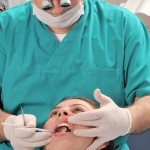
Interproximal dental stripping or interproximal enamel reduction (IER) was originally suggested back in the 1940s as a method of gaining space in the lower incisor region. The aim of this review was to investigate the enamel roughness resulting from IER as well as the cariogenicity of IER in orthodontic patients.
The databases, PubMed, Scopus, The Cochrane Library, ProQuest, Web of Science, LILACS, and the Brazilian bibliography of dentistry were searched for controlled studies. Selection, data extraction and quality assessment was conducted independently by two reviewers
- 18 studies were included in the review; 14 assessed enamel roughness, 4 caries incidence.
- Follow-up periods ranged for 1-17 years.
- A qualitative summary of the enamel roughness studies was presented.
- Three of the 4 caries studies (with 103 participants in total) contributed to a meta-analysis, this found no statistical difference in caries between IER and control groups, odds ratio, 0.926 (95% CI 0.473–1.812)
The authors concluded
Drawing reliable conclusions on enamel roughness after IER is difficult owing to the diversity of the available studies. Statistically, the occurrence of caries on surfaces previously treated with IER was the same as that on intact surfaces, indicating that IER does not increase the risk of caries on treated teeth.
Comment
As IER involves the removal of sound enamel surfaces there are concerns that this procedures could result in further damage such as caries, periodontal disease or hypersensitivity. This review only focuses on surface roughness and caries. The quality of the included studies was not high and the 3 studies that contributed to the caries meta-analysis were small, with the largest only having 43 participants.
Links
Koretsi V, Chatzigianni A, Sidiropoulou S. Enamel roughness and incidence of caries after interproximal enamel reduction: a systematic review. Orthod Craniofac Res. 2013 Sep 9. doi: 10.1111/ocr.12030. [Epub ahead of print] PubMed PMID: 24011354.
